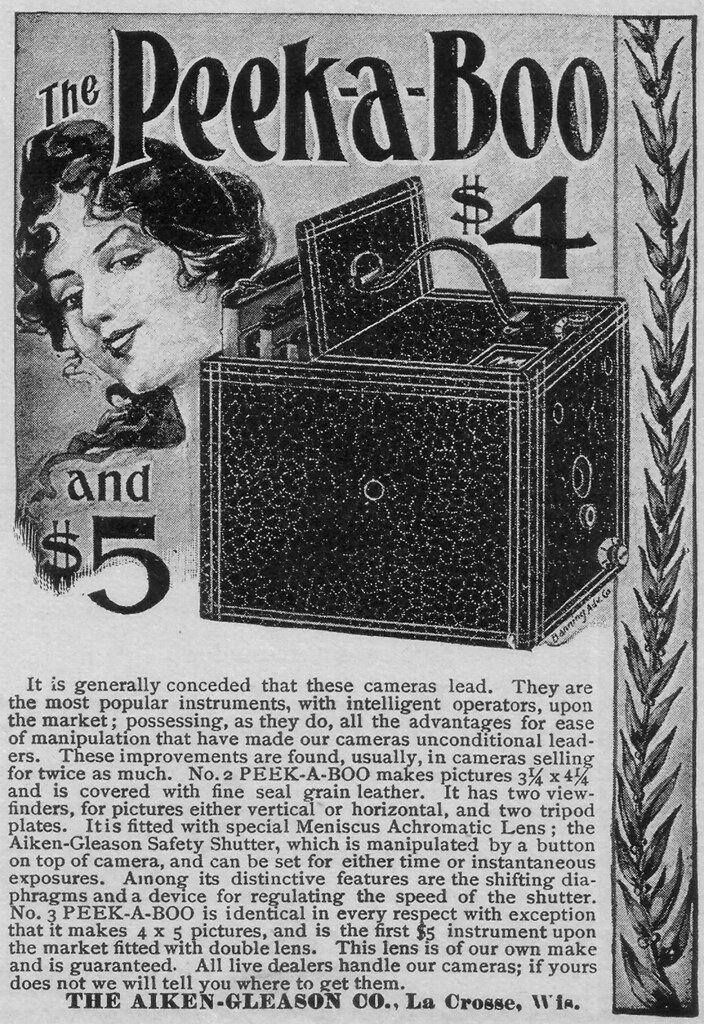Difference between revisions of "Peek-a-Boo"
m (sb) |
m |
||
| Line 1: | Line 1: | ||
| − | The '''Peek-a-Boo''' was a [[magazine camera]], but without sophisticated plate change mechanism. The holder with the exposed plate had to be closed, pulled out, and put behind holders of the unexposed plate(s). Then the holder of the unexposed plate in the image plane had to be opened and the magazine to be closed. Then the camera was ready for the next shot. It was made in the 1890s by Aiken-Gleason, a company based in La Crosse, Wisconsin. All other details on the old ad below: | + | The '''Peek-a-Boo''' was a [[magazine camera]], but without sophisticated plate change mechanism. The holder with the exposed plate had to be closed, pulled out, and put behind holders of the unexposed plate(s). Then the holder of the unexposed plate in the image plane had to be opened and the magazine to be closed. Then the camera was ready for the next shot. It was made in the 1890s by Aiken-Gleason, a company based in La Crosse, Wisconsin. It's name was taken from the funny love song [https://www.youtube.com/watch?v=ShHOOQkGX4k "Peek A Boo, I love You"]. All other details on the old ad below: |
{{Flickr image | {{Flickr image | ||
Latest revision as of 22:29, 9 November 2015
The Peek-a-Boo was a magazine camera, but without sophisticated plate change mechanism. The holder with the exposed plate had to be closed, pulled out, and put behind holders of the unexposed plate(s). Then the holder of the unexposed plate in the image plane had to be opened and the magazine to be closed. Then the camera was ready for the next shot. It was made in the 1890s by Aiken-Gleason, a company based in La Crosse, Wisconsin. It's name was taken from the funny love song "Peek A Boo, I love You". All other details on the old ad below:

|
| scanned by Uwe Kulick (Image rights) |